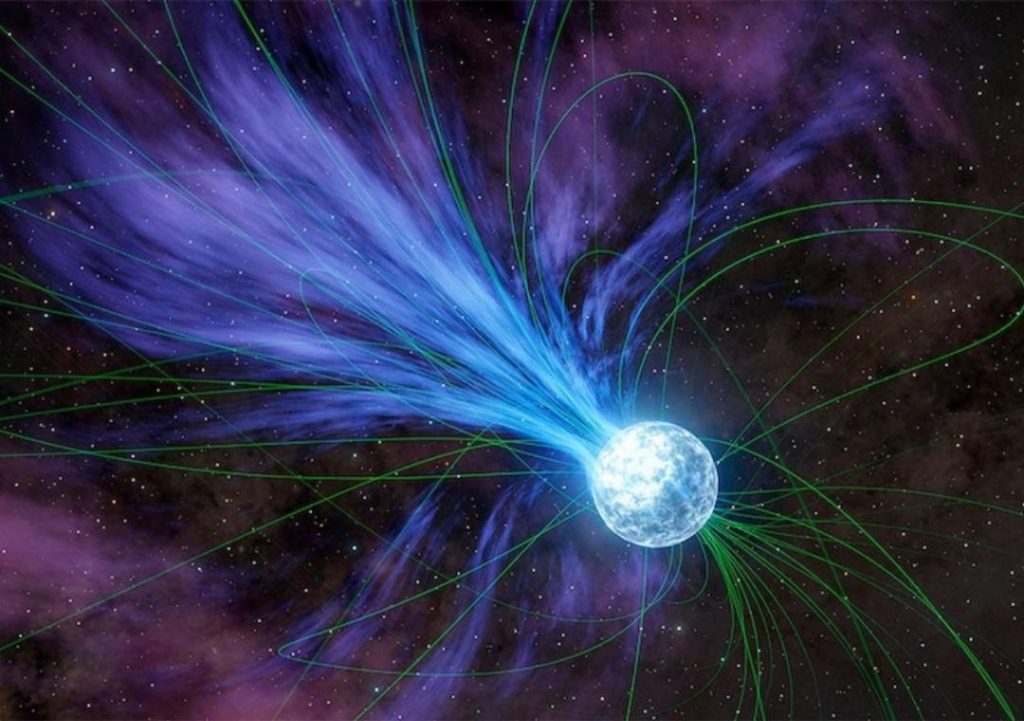
Gold & Platinum Created Through Neutron Stars’ Explosions: Study
For centuries, humans have been fascinated by the origins of precious metals like gold and platinum. While we’ve long known that these metals are abundant in the Earth’s crust, the exact processes that led to their formation have remained shrouded in mystery. However, a groundbreaking study led by Columbia University student Anirudh Patel has shed new light on the subject, revealing that magnetars – or highly magnetized neutron stars – played a crucial role in the creation of these precious metals.
According to the study, magnetars exploded and released flares that contained gold and platinum, which then went on to form part of the Earth’s crust. This phenomenon occurred over 20 years ago, and scientists have been able to detect the remnants of this cosmic event. The explosions, which happen approximately once per decade in the Milky Way and annually across the observable universe, are a testament to the awe-inspiring power of neutron stars.
But how did these explosions lead to the creation of gold and platinum? To understand this process, it’s essential to delve into the world of neutron stars. These incredibly dense objects are formed when massive stars collapse under their own gravity, resulting in a massive release of energy. At the heart of these stars lies a magnetar, which is characterized by its intense magnetic field.
Magnetars are incredibly powerful, with magnetic fields that are trillions of times stronger than those found on Earth. When these magnetars explode, they release massive amounts of energy in the form of flares and jets, which can travel vast distances across the cosmos. It is these flares and jets that are believed to have carried the seeds of gold and platinum to the Earth.
The process begins when a magnetar undergoes a massive explosion, known as a gamma-ray burst (GRB). During this event, the magnetar’s magnetic field becomes so strong that it begins to collapse, releasing an enormous amount of energy in the form of flares and jets. These flares and jets are thought to contain the essential elements necessary for the creation of gold and platinum, including iron and nickel.
As the flares and jets travel through space, they interact with the surrounding environment, causing the elements to mix and combine in new and complex ways. Over time, these elements coalesce into larger particles, including the precious metals we know today.
The study, which was published in the journal Nature, provides strong evidence for this theory. By analyzing the light emitted by magnetars during their explosions, scientists were able to detect the presence of gold and platinum in the flares and jets. This evidence suggests that these elements were indeed created during the explosion and then transported to the Earth.
So, what does this mean for our understanding of the origins of gold and platinum? For centuries, humans have been fascinated by these precious metals, and their discovery has played a crucial role in the development of human civilization. However, the exact processes that led to their formation have remained shrouded in mystery.
The discovery of magnetars as the source of gold and platinum provides a new understanding of the origins of these precious metals. It suggests that these elements were created in the heart of neutron stars, where the extreme conditions led to the formation of these complex particles. From there, they were transported to the Earth, where they played a crucial role in the development of human civilization.
In conclusion, the study of magnetars and their role in the creation of gold and platinum provides a new understanding of the origins of these precious metals. It suggests that these elements were created in the heart of neutron stars, where the extreme conditions led to the formation of these complex particles. From there, they were transported to the Earth, where they played a crucial role in the development of human civilization.
Source:






